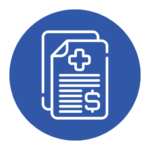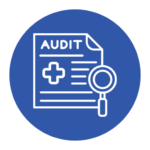Improve Your Practice's Performance With Revenue Cycle KPIs
Introduction
Managing a practice efficiently is very important to improve your practice’s performance in providing quality patient care. One key aspect is understanding and utilizing Revenue Cycle Key Performance Indicators (KPIs). These KPIs are metrics that improve your practice’s performance and help to track and improve their financial performance. Med Revolve Billing focuses on these indicators; practices can optimize their revenue cycle processes, reduce costs, and ultimately improve their bottom line.
Med Revolve Billing Helps To Understand Revenue Cycle KPIs
Revenue Cycle KPIs are measurable values that show how effectively a practice manages its revenue cycle processes. These indicators provide insights into various aspects of the revenue cycle, such as billing, collections, and compensation. By tracking these KPIs, practices can identify opportunities for development and implement plans that improve their bottom line.
Why Revenue Cycle KPIs Matter
Revenue Cycle Key Performance Indicators (KPIs) are essential for healthcare practices. They provide insights into financial processes, helping practices identify and fix issues to ensure accurate and timely billing. This improves cash flow, increases patient satisfaction, and ensures compliance with regulations. KPIs also guide decision-making, leading to improved financial and operational outcomes and ultimately contributing to the overall success and sustainability of the practice.

Important Revenue Cycle KPIs Explained
Days in Accounts Receivable (AR):
This KPI calculates how long it typically takes a practice to be paid after rendering services. A lower figure means that the practice gets money faster, which translates into a more efficient revenue cycle process. This can help improve cash flow and reduce the risk of bad loans.
Clean Claims Rate:
The proportion of claims that are submitted to payers and processed error-free is measured by the clean claims rate. A higher clean claims rate indicates fewer payment delays and a more efficient billing process. Practices with a high clean claims rate typically experience faster compensation and fewer claim rejections, which leads to improved revenue.
Denial Rate:
The denial rate measures the percentage of claims that payers deny. A high denial rate can indicate coding, billing, or documentation issues, leading to delayed or lost revenue. By reducing the denial rate, practices can improve their revenue cycle efficiency and increase overall revenue.
Collection Rate:
The collection rate measures the percentage of revenue collected compared to the total amount billed. A higher collection rate indicates an effective billing and collection process. Practices with a high collection rate are more likely to receive timely payments and reduce outstanding balances. This leads to improved financial stability.
Net Collection Rate:
The net collection rate measures the percentage of revenue collected after deducting losses and adjustments. A higher net collection rate indicates a more effective collection process. Practices with a high net collection rate can better recover revenue that may have been lost due to unpaid or underpaid claims.
Accounts Receivable (AR) Aging:
This KPI tracks the age of outstanding accounts receivable. It helps practices identify and follow up on overdue payments, which can improve cash flow. By reducing the time it takes to collect fees, practices can improve their financial performance and reduce the risk of bad loans.
Revenue Cycle Length:
The revenue cycle length measures the average time it takes for a practice to complete the revenue cycle process, from patient encounters to payment. A shorter cycle length indicates a more efficient revenue cycle process. Practices with a shorter revenue cycle length can collect payments more quickly, improving cash flow and financial stability.

Benefits of Monitoring Revenue Cycle KPIs
Identifying Problems:
Monitoring Revenue Cycle Key Performance Indicators (KPIs) helps healthcare providers to improve your practice’s performance and identify problems in their revenue cycle processes. These issues can include delays in claim processing, billing errors, or compensation issues. By identifying these issues, practices can take corrective actions to optimize their processes. This reduces inefficiency and improves overall revenue cycle performance.
Improving Cash Flow:
One key benefit of monitoring revenue cycle KPIs is improving cash flow. By tracking metrics such as days in accounts receivable (AR) and collection rate, practices can optimize their billing and collection processes to ensure timely payments from payers. This improves cash flow and allows practices to manage their finances better and invest in growth opportunities.
Enhancing Patient Satisfaction:
Efficient revenue cycle processes can also enhance patient satisfaction. Patients receiving accurate and timely bills are less likely to encounter billing issues or compensation delays. This improves the overall patient experience and can increase patient satisfaction with the practice’s services.
Reducing Costs:
Monitoring Revenue Cycle KPIs can help practices identify areas for cost reduction. By improving efficiency and reducing errors in billing and collection processes, practices can lower operational costs, leading to improved profitability and financial stability.
Improving Decision-Making:
By tracking revenue cycle KPIs, practices can help make more informed decisions regarding revenue cycle processes. Real-time insights into key metrics such as Denial Rate and Accounts Receivable (AR) Aging can help practices identify trends, set realistic goals, and develop actionable strategies to improve revenue cycle performance.
Following Compliance:
Monitoring Revenue Cycle KPIs helps practices ensure compliance with regulatory requirements and payer guidelines. By tracking coding, billing, and documentation metrics, practices can identify areas where compliance may be lacking and take corrective actions to reduce compliance risks.
Facilitating Strategic Planning:
Finally, monitoring Revenue Cycle KPIs provides practices with knowledge based on data that can inform strategic planning. By analyzing trends in key metrics over time, practices can identify areas for improvement, set achievable goals, and develop long-term strategies to enhance their revenue cycle performance and overall financial health.
Conclusion
Monitoring Revenue Cycle Key Performance Indicators (KPIs) is crucial for improving a practice’s financial health and operational efficiency. Med Revolve Billing is committed to helping practices achieve these goals by providing comprehensive solutions for managing revenue cycle performance.
Engage and Explore
How Med Revolve Billing can increase your revenue and optimize your RCM







